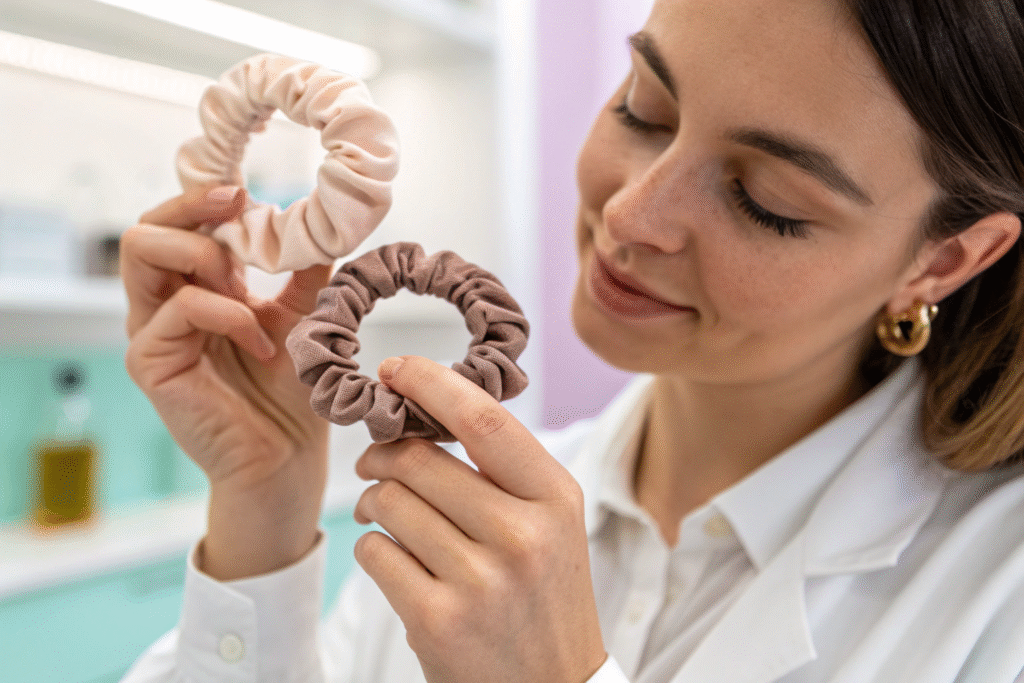Many customers with sensitive skin experience allergic reactions to hair ties, especially those made from synthetic rubber or latex blends. If you’re an apparel accessories buyer, dermatologist-friendly hair accessories can elevate your brand and offer peace of mind to health-conscious customers.
Sourcing hypoallergenic hair ties that pass dermatologist approval requires careful supplier selection, material certification, and robust quality control. In this article, I’ll walk you through how to choose the right factory, what materials to look for, and how to meet both dermatologist and customer expectations.
As a professional manufacturer of hair accessories for international clients, we’ve helped many buyers transition to hypoallergenic options successfully. Read on to learn how you can do the same and create high-trust products for allergy-sensitive markets.
What Are the Best Materials for Hypoallergenic Hair Ties?
Most allergy problems with hair ties come from the materials used in elastic cores or outer wrapping. We solve this by choosing skin-safe alternatives that reduce irritation and eliminate common allergens.
Silk, organic cotton, and thermoplastic elastomers (TPE) are the top choices for hypoallergenic hair ties. These materials are free of latex, low in friction, and breathable, making them excellent for sensitive scalps and hair.
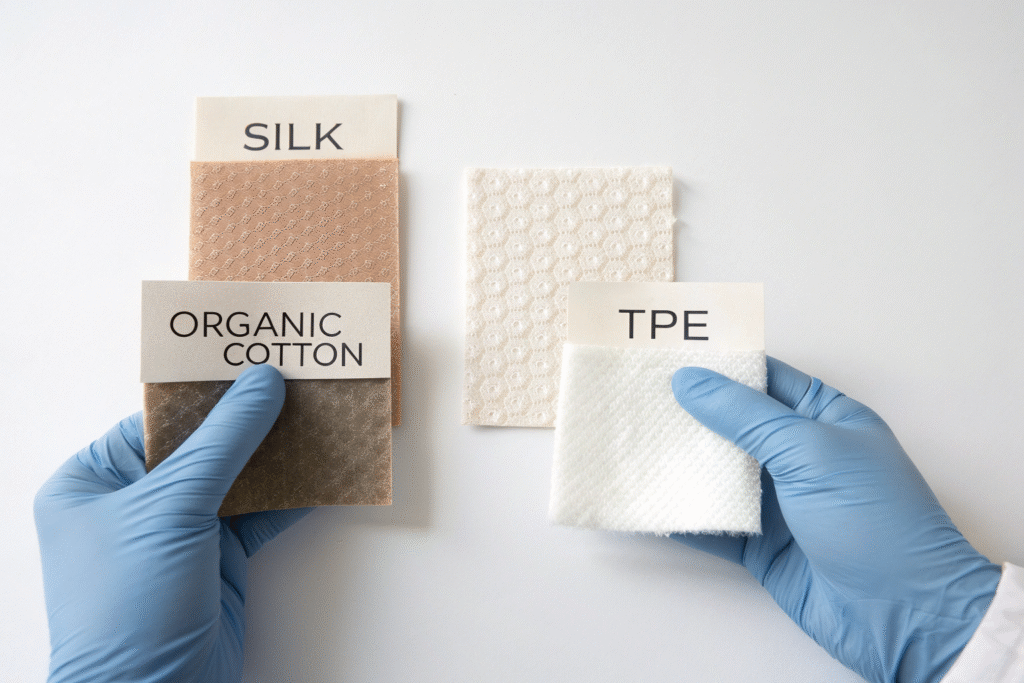
While TPE provides strong stretch without latex, organic fibers offer softness and airflow. These options not only win consumer trust but also pass third-party tests for skin compatibility, especially when paired with tight QC processes.
Why Is Silk a Preferred Hypoallergenic Material?
Silk is naturally smooth, protein-based, and doesn’t trap moisture like synthetics. That makes it ideal for avoiding friction burns or redness on the scalp. According to dermatologists at Healthline, silk reduces hair breakage and doesn’t irritate the scalp like elastic bands.
We’ve had clients specifically request silk scrunchies for their sensitive-skin collections. Many now use our OEKO-TEX certified silk as a safe and premium option.
Can Organic Cotton Replace Elastic-Based Hair Ties?
Yes, especially when used with hidden elastic cores made from TPE or spandex-free blends. Organic cotton minimizes contact dermatitis risks and is commonly recommended by dermatologists, as noted in DermNet NZ. Combining it with seamless stitching and low-tension design ensures better scalp health.
How to Get Dermatologist Approval for Hair Accessories?
If your products irritate even a small percentage of users, your brand risks negative reviews. That’s why many brands now seek dermatologist validation for new accessories, especially for skin-contact items like hair ties.
To gain dermatologist approval, request third-party clinical testing and provide a full bill of materials with allergen-free claims. Transparency, certification, and consistency are key to success.
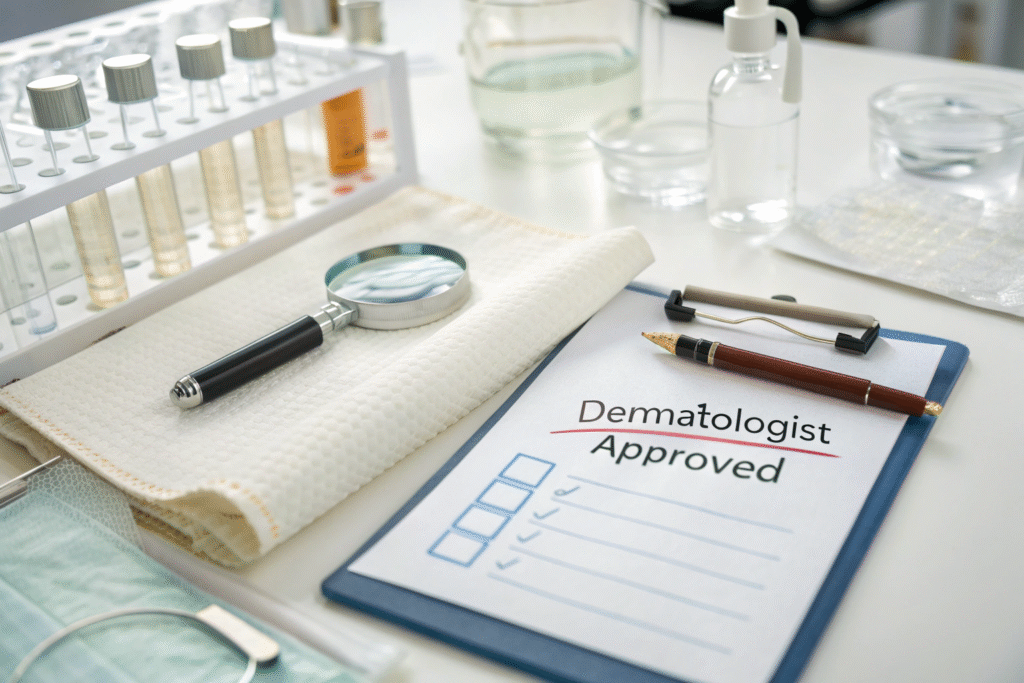
What Tests Are Required for Dermatologist Claims?
Several standardized tests help evaluate skin compatibility, including:
| Test Type | Purpose | Certifying Bodies |
|---|---|---|
| Patch Test | Irritation check | SGS, Intertek |
| Sensitization Test | Allergy risk | Eurofins, BV |
| Material Safety Data Sheet (MSDS) | Chemical exposure | In-house lab |
We’ve helped clients submit samples for these tests through SGS and Intertek. Once passed, brands can label products as “dermatologist-tested” or “hypoallergenic” with legal backing.
How Can Factories Help with Documentation and Testing?
Reliable factories should provide full BOM sheets, testing coordination, and compliance with EU REACH or US CPSIA standards. For example, our QC team regularly assists clients with REACH-compliance documentation and bulk test reporting to support their dermatologist consultations.
Where to Find Certified Factories for Hypoallergenic Hair Ties?
Not every hair accessory factory understands the importance of hypoallergenic claims. And many don’t have direct access to skin-safe material supply chains.
look for certified factories that specialize in skin-sensitive production, offer third-party lab access, and support low-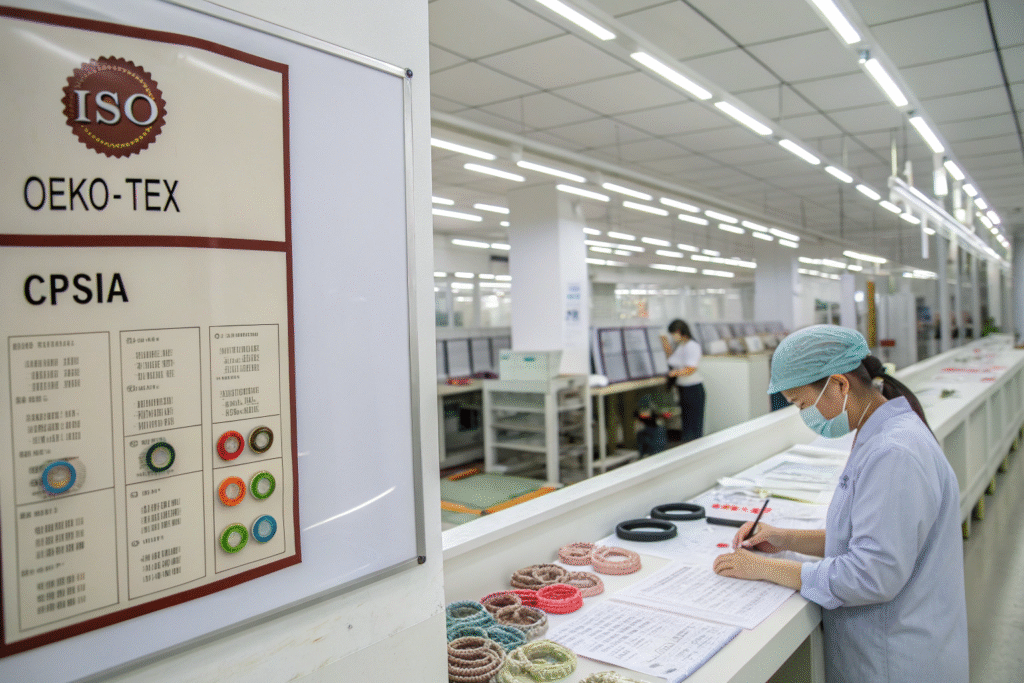
Which Factory Certifications Matter for Hypoallergenic Claims?
Key certifications to look for include:
- OEKO-TEX Standard 100
- ISO 9001 (for QC systems)
- CPSIA (for U.S. safety)
- REACH (for EU market)
Our factory, for example, works directly with OEKO-TEX certified dye houses and uses latex-free TPE elastics tested by TUV SUD. These systems allow us to offer trustworthy hypoallergenic options.
Why Are Small MOQs Important for Testing Hypoallergenic Styles?
Many buyers want to test new hypoallergenic styles in small quantities. We offer low MOQs to help customers run trials, gather user feedback, and verify dermatologist safety before mass production.
How to Balance Cost and Quality in Hypoallergenic Hair Ties?
It’s a myth that hypoallergenic products must be expensive. While premium materials may raise unit costs slightly, proper sourcing and bulk planning keep your pricing competitive.
Work with suppliers who offer tiered pricing, cost-saving material combos, and streamlined logistics for allergen-free products. The key is negotiation and long-term collaboration.
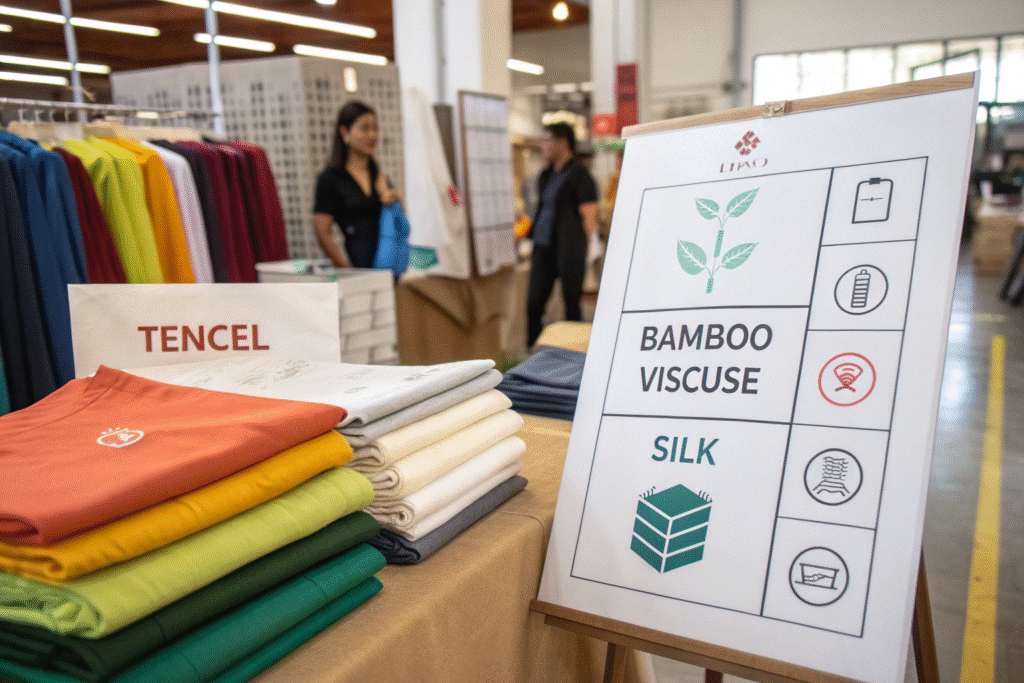
Are There Cost-Effective Alternatives to Silk and Organic Cotton?
Yes. TENCEL™ Modal and bamboo viscose offer similar softness and breathability at lower costs. They’re often used in eco-textile lines and pass common hypoallergenic tests. Our clients have used bamboo-based hair ties for sensitive-skin collections at 20% lower prices than silk.
How to Calculate Landed Costs for Hypoallergenic Hair Accessories?
When importing to the U.S. or EU, be sure to calculate duties, labeling, and shipping for certified accessories. We help clients build a full landed cost structure including REACH compliance and custom labeling.
| Item | Cost Impact |
|---|---|
| Dermatologist Testing | $100–$350 per test |
| OEKO-TEX Materials | +10–15% |
| Custom Labeling | $0.05–$0.12/unit |
| DDP Shipping | Flat or discounted on volume |
Conclusion
Hypoallergenic hair ties are more than a trend—they’re a response to a growing need for inclusive, skin-friendly fashion. By selecting the right materials, working with tested suppliers, and partnering with experts in certification, your brand can meet the rising demand from allergy-conscious consumers.
If you’re ready to develop dermatologist-approved hair accessories under your own brand, we’re here to help. At HairAcc, we offer full OEM development, skin-safe material sourcing, and custom labeling for international clients. To start a sample order or request a quote, contact our Business Director Elaine at elaine@fumaoclothing.com. Let’s build your next hypoallergenic best-seller—together.

